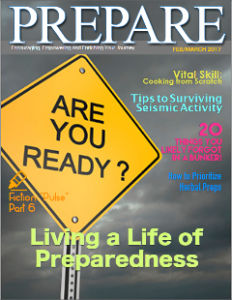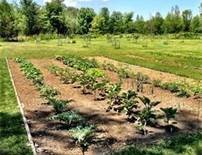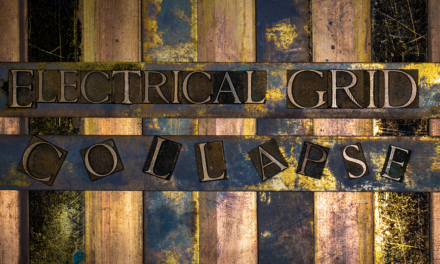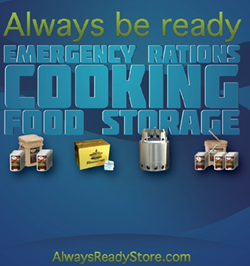Imagine a life free from utility bills, the hum of electronics, and the constant buzz of the modern world. This is the reality of off-grid living.
Off-grid living is a lifestyle choice that prioritizes independence, self-reliance, and a deep connection with nature. More than just a trend, it’s a return to simpler times, where life moves at a slower pace and every day brings a new opportunity to engage with the world around us.
In the following posts, we will dive deeper into the philosophy behind off-grid living, the practical steps to achieve it, and the challenges and rewards that come with this unique lifestyle. Whether you’re a seasoned off-grid dweller seeking fresh insights or a curious newcomer ready for a change, you’re in the right place.
Welcome to the world of off-grid living – a journey into self-sufficiency and a life lived on your own terms.
What Is Off-Grid Living?
 Off-grid living refers to a lifestyle that is independent of the main national electrical grid. This lifestyle is often adopted by individuals who desire self-sufficiency, environmental sustainability, and freedom from modern societal constraints. These individuals, often referred to as off-gridders, typically rely on alternative energy sources such as solar, wind, and hydropower.
Off-grid living refers to a lifestyle that is independent of the main national electrical grid. This lifestyle is often adopted by individuals who desire self-sufficiency, environmental sustainability, and freedom from modern societal constraints. These individuals, often referred to as off-gridders, typically rely on alternative energy sources such as solar, wind, and hydropower.
Off-grid living involves generating one’s own power, sourcing water, managing waste, and producing food. This lifestyle requires a significant level of practical skills and resilience. It’s not uncommon for off-gridders to grow their own food, raise livestock, and use composting toilets to manage waste.
Off-grid homes are typically located in remote or rural areas, where there is ample space for renewable energy installations and farming. These homes are often designed to be energy-efficient, with features such as insulation, thermal mass, and natural light.
• Energy Production: Off-gridders use renewable energy sources such as solar panels, wind turbines, and hydroelectric systems to generate electricity. These systems are often complemented by battery storage systems and backup generators.
• Water and Waste Management: Off-grid living also involves sourcing water from wells, streams, or rainwater collection systems. Waste is typically managed through composting toilets and greywater recycling systems.
• Food Production: Many off-gridders grow their own food in gardens and greenhouses. They may also raise livestock or keep bees for honey.
Despite the challenges, off-grid living can offer numerous benefits, including lower living costs, a reduced carbon footprint, and a closer connection to nature. However, it’s essential to thoroughly research and prepare for this lifestyle before making the transition.
How Is Electricity Generated Off-Grid?
Off-grid living requires generating your own electricity. This is typically achieved through renewable energy sources such as solar panels, wind turbines, and hydroelectric power. Solar panels are a popular choice for off-grid homes due to their relative ease of installation and maintenance. They capture sunlight and convert it into electricity, providing a sustainable and environmentally friendly power source.
Wind turbines function similarly, converting kinetic energy from the wind into electrical energy. These are particularly effective in areas with consistent and strong wind patterns. Hydroelectric power, on the other hand, harnesses the energy of moving water to generate electricity. This method requires a nearby water source and is less commonly used due to the specific geographical requirements.
In addition to these renewable energy sources, many off-grid homes utilize a battery storage system. This allows excess electricity to be stored and used when the primary source isn’t generating power, such as during the night or on windless days.
The choice of electricity generation method often depends on the geographical location and individual needs of the off-grid home. Regardless of the method chosen, living off-grid requires careful planning and management of energy resources to ensure a consistent and reliable power supply.
What Are Off-Grid Water Solutions?
 Off-grid living requires innovative water solutions to ensure a reliable supply. One such solution is rainwater harvesting, a method that involves collecting and storing rainwater for later use. This method is sustainable and cost-effective, making it a popular choice for off-grid living.
Off-grid living requires innovative water solutions to ensure a reliable supply. One such solution is rainwater harvesting, a method that involves collecting and storing rainwater for later use. This method is sustainable and cost-effective, making it a popular choice for off-grid living.
Another off-grid water solution is the use of wells. Wells provide a steady supply of water, although the availability and quality of water can depend on the location and depth of the well.
A third solution is the use of water delivery services. While this might not be the most sustainable option, it can be a necessary choice in areas where other water sources are not available or reliable.
- Rainwater Harvesting
- Wells
- Water Delivery Services
Water purification is another crucial aspect of off-grid water solutions. This might involve boiling water, using water purification tablets, or employing more sophisticated systems like reverse osmosis.
Off-grid living is all about self-reliance and sustainability, and water is no exception. By utilizing these off-grid water solutions, you can ensure a reliable and safe water supply for your off-grid lifestyle. It’s important to research and understand the options available to you, as the best solution will depend on your location, climate, and personal needs.
How To Grow Food Off-Grid?
Living off-grid requires a self-sustaining approach to food production. One of the fundamental steps is choosing the right crops. Consider low-maintenance plants like potatoes, beans, tomatoes, and zucchini. These are high-yielding and require minimal care.
Permaculture plays a crucial role in off-grid living. It’s a system of agricultural design that mimics natural ecosystems, promoting sustainability and self-sufficiency. Permaculture principles can be applied to any scale of gardening, from small backyard plots to large-scale farm operations.
- Composting is another essential aspect of growing food off-grid. It allows you to recycle organic waste into nutrient-rich soil, promoting healthy plant growth.
Water conservation is also vital in off-grid farming. Techniques like drip irrigation and rainwater harvesting help optimize water usage.
Another way to ensure a constant food supply is through aquaponics, a system that combines conventional aquaculture with hydroponics. Fish waste provides organic food for the plants, and the plants naturally filter the water for the fish.
Preservation methods such as canning, drying, and freezing can help you store your produce for longer periods, ensuring you have food supply year-round.
Remember, off-grid living is about creating a sustainable lifestyle. The key is to learn, adapt, and continuously improve your methods for growing food.
What Are Off-Grid Waste Disposal Methods?
Living off-grid means finding sustainable ways to manage waste. One of the most common methods is composting. Organic waste like fruit peels, vegetable scraps, and coffee grounds can be turned into nutrient-rich compost for your garden. This process not only reduces waste but also contributes to the health of your plants.
Another popular method is the use of a composting toilet. Unlike traditional toilets, these systems do not require water and instead convert human waste into compost that can be safely returned to the earth. It’s a practical solution for those living in remote areas without access to sewage systems.
For non-organic waste, recycling is a key part of off-grid living. Many off-gridders repurpose items like glass jars, tin cans, and plastic containers, reducing the amount of waste that goes into landfills. Some also burn paper and cardboard waste in a controlled environment, turning it into ash that can be used in the garden.
Lastly, greywater systems are becoming increasingly popular in off-grid communities. These systems reuse water from sinks, showers, and washing machines for irrigation, reducing water waste and the strain on local water resources.
Each of these off-grid waste disposal methods contributes to a sustainable lifestyle, reducing our impact on the environment and making the most of our resources. Living off-grid is about more than just disconnecting from public utilities; it’s about creating a self-sufficient and eco-friendly lifestyle.
Is Off-Grid Living Legal?
The legality of off-grid living varies significantly across different regions. In some countries, it’s completely legal to live off-grid, while in others, there may be restrictions or requirements. For example, in the United States, the legality of off-grid living is determined by local zoning laws and building codes. Some states, like Florida and California, have laws that encourage off-grid living, while others may impose restrictions on off-grid activities like collecting rainwater or using solar panels.
In Canada, off-grid living is generally legal but can be subject to certain regulations. For instance, you may be required to connect to the municipal water supply or sewage system. In Australia, off-grid living is legal, but you must comply with building codes and planning regulations.
In the United Kingdom, off-grid living is legal, but planning permission is usually required if you want to build a home in the countryside.
- Building Codes: These are regulations that dictate how a building must be constructed or modified. They can affect off-grid living if they require connection to utilities.
- Zoning Laws: These laws can restrict where you can live off-grid, often to prevent people from living in areas not designed for residential use.
It’s crucial to research the laws in your specific area before deciding to live off-grid. Consulting with a local expert or legal advisor can help you navigate the complexities of off-grid laws and regulations. Remember, while off-grid living offers a sense of freedom and self-reliance, it’s essential to ensure your lifestyle is within the bounds of the law.
How To Stay Connected Off-Grid?
Living off-grid doesn’t necessarily mean you’re cut off from the world. You can still stay connected to the outside world, thanks to modern technology. One of the most popular options is satellite communication. Satellite phones and internet services can provide reliable connectivity, even in the most remote locations. However, it’s important to consider the cost, as these services can be pricey.
Another option for off-grid communication is the use of two-way radios. These devices are perfect for local communication, especially in areas with no cellular coverage. They’re also useful for emergency situations.
Solar-powered devices are also becoming increasingly popular in the off-grid community. These devices harness the power of the sun to provide electricity, enabling you to charge your communication devices. Solar panels can be a great investment for those living off-grid.
- Ham radios
- CB radios
- Walkie-talkies
These are other excellent communication devices for off-grid living. They require no network infrastructure and can reach long distances.
In addition, there are now apps that allow you to send messages without internet or cellular service. These apps use Bluetooth to connect to nearby devices, creating a mesh network for communication.
Remember, staying connected while living off-grid requires planning and investment. But with the right tools and preparation, you can enjoy the solitude of off-grid living without feeling isolated.
What Skills Are Needed For Off-Grid Living?
 To thrive in an off-grid living scenario, you must master a set of diverse skills.
To thrive in an off-grid living scenario, you must master a set of diverse skills.
Firstly, understanding permaculture and organic farming is crucial. These skills ensure your ability to grow your own food, maintaining a sustainable diet. Composting, crop rotation, and natural pest control are some of the techniques you need to grasp.
Secondly, knowledge of basic construction is essential. Whether it’s building your own shelter or repairing existing structures, this skill could make a significant difference in your living conditions.
Water collection and purification techniques are another must-have skill set. Rainwater harvesting, water filtration, and understanding how to store water safely are vital for survival.
Renewable energy systems knowledge is also a key skill. This includes understanding solar panels, wind turbines, and hydroelectric power.
Additionally, basic first aid skills are important. Knowing how to treat minor wounds, recognize symptoms of common illnesses, and when to seek professional help can be lifesaving.
Lastly, proficiency in outdoor survival skills such as fire-making, foraging, and navigation can be extremely beneficial.
Remember, off-grid living requires continuous learning and adaptability. The more skills you acquire, the more prepared you’ll be for any challenges that come your way.
Conclusion
In sum, off-grid living is a lifestyle choice that emphasizes self-reliance, sustainability, and a reduced dependence on traditional utilities. This post has illuminated the various aspects of off-grid living, from generating electricity and finding water solutions, to growing food and disposing of waste efficiently. We’ve also discussed the legality of this lifestyle and the ways to stay connected in an off-grid setting.
The skills required for off-grid living are diverse and can be challenging to master, but the rewards are immense. The future trends in sustainable living and renewable energy sources are likely to make this lifestyle more accessible and efficient.
Embracing off-grid living is not just about survival, but also about thriving in harmony with nature. It’s about learning to use resources wisely, being resilient, and fostering a sense of community. If you’re considering this lifestyle, remember that preparation is key. Research thoroughly, learn the necessary skills, and plan for your basic needs.
Off-grid living isn’t for everyone, but those who choose it often find a deep sense of satisfaction and freedom. As we move forward, it will be interesting to see how advancements in technology and shifts in societal attitudes will continue to shape and redefine what it means to live off-grid.








